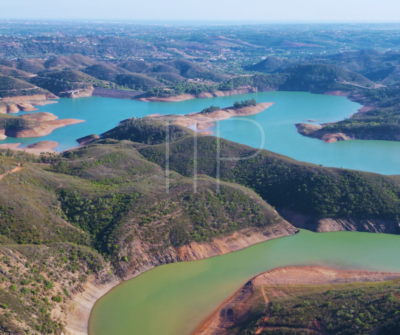“The priority use is human use and agriculture will have a bigger cut,” said the vice-president of the Portuguese Environment Agency.
The Portuguese Environment Agency expects to present a contingency plan later this month with new rules for water consumption in the Algarve, which is going through the longest drought on record.
Speaking to Lusa, APA vice-president José Pimenta Machado admitted that the contingency plan will penalize agriculture more, but the quotas have not yet been defined and will be articulated with local actors.
“This year, in the Algarve, we’re going through the worst drought ever, we’ve never been in this situation, with the lowest levels of reservoir reserves ever and the same thing in groundwater,” a “consequence of ten years of continuous drought,” said Pimenta Machado.
“The priority use is human use and agriculture will have a bigger cut,” added Pimenta Machado.
“We’re drawing up a plan” for “continuous evaluation” and “listening to the sectors – agriculture, the urban sector, tourism – and working with them to define” the actions to be taken, seeking to “define water cuts, whether for the urban sector, tourism or agriculture”, said the official who didn’t want to anticipate the amounts involved, although he admits that the biggest impact will be on agricultural production.
“The plan will be presented very soon” and is “still days away”. An inter-ministerial drought commission will be held next week and then the document will be finalized to be presented in the region, always with the “central objective that the population does not lack water”.
The six reservoirs in the Algarve are at 25% of their capacity, 20 percentage points less than in the same period last year, with a total of 90 cubic hectometers less water.
Portugal has two water realities. In the north, the reservoirs have an average water level of 75%, while south of the Tagus, namely in the southwest of Alentejo and in the Algarve, the “situation is critical” because the “rains have not allowed the problems to be repaired”.
Of the ten driest years ever, six were after 2000 and the last 20 years have seen a 25% reduction in rainfall, he added.
In the past, the historic drought of 2005 in the Algarve led to the construction of the Odelouca dam and “it was thought that the problem of water reserves had been solved for the region”.
“The truth is that, ten years on, we’re all worried here,” because “there has been less rainfall on a continuous basis,” which has worsened the situation of the groundwater.
Rather than fetching water from other parts of the country, Pimenta Machado argues that “management should be by river basin”, in order to increase the territory’s natural resilience.
He also appealed to citizens to save water, particularly in the Algarve region, with “small acts” that allow for “more sparing” management of this scarce resource.
Pimenta Machado stressed that this contingency plan aims to respond to the current water ‘stress’, but a series of projects are underway, to be financed by the Recovery and Resilience Plan (PRR), which will include more permanent measures.
Among these measures, he highlighted “portable desalination plants” or reinforcing the use of water from Wastewater Treatment Plants, particularly for golf courses.
“We want to reach the end of the RRP and reuse eight million cubic meters” of water, four times more than is already used today and serving a total of “16 to 17 courses”.
Other major measures include “making sea water drinkable” through the first large desalination plant for the Albufeira area, with a capacity of 16 million cubic meters, and the Sota-vento transfer, with a connection between Pomarão and the Guadiana.

